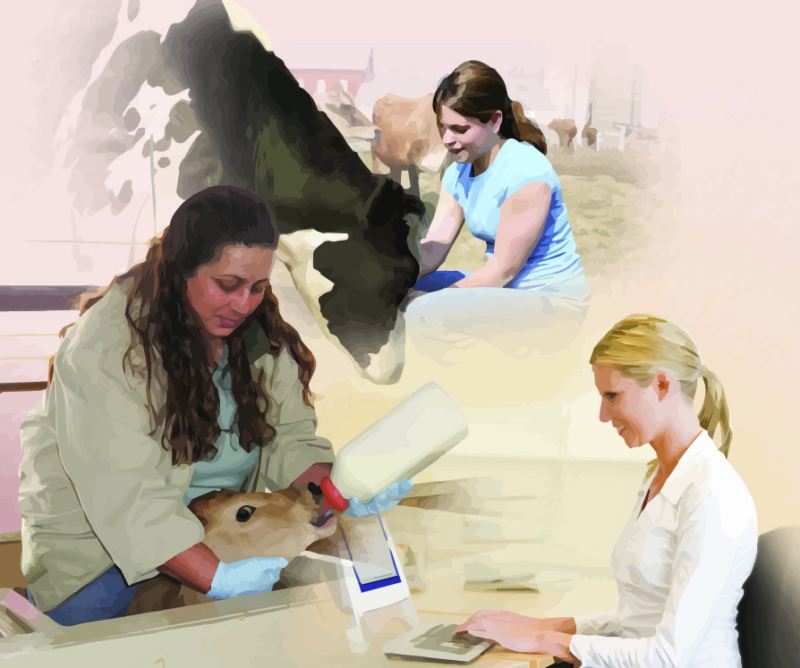An employee who has been with our team for nearly five years just turned in his resignation. He was the kind of employee that anyone would want. He does an excellent job in his role, works well with the rest of the team and doesn’t take a lot of oversight. He is going to be hard to replace, and I feel like I am starting all over again. But that is the reality of managing employees.
It can feel like this never-ending cycle – someone leaves, and you go through the hiring process. Trying to find the ideal candidate can sometimes feel like searching for that needle in a haystack. Then at last you find them, hire them, train them, help them acclimate into the role and continue to coach them. Occasionally, that is where the cycle can stall or start over again because the employee you hired never quite excels in the role. Often, though, if you are lucky, you watch them get to the point where they are really succeeding in their role. But even then, you bite your fingers hoping they don’t leave. Unfortunately, though, despite your very best efforts, even the good ones do sometimes leave. And the process starts all over again.
HR experts often refer to this revolving door as the employee life cycle and point to six key phases within the cycle that influence the overall employee experience. Those include attraction, recruitment, onboarding, retention, career development and separation. So, what can we do during each phase to make it feel a little less like we are just going around in circles?
1. Attraction
Just like any other relationship, your relationship with an employee starts with that initial attraction. Think about what would attract a potential employee to work for your organization. What do your current employees say about working there? What do those interacting with your business say about how you treat them and how they feel when they are working with you?
While the salary, benefits and job responsibilities do play a role in prospective employees' decisions, they want to know the company offers a culture that aligns with their own values and priorities. Does the company act with integrity, does it offer a work-life balance, is there a sense of camaraderie among team members? Those characteristics are often emulated in the relationships you have with both your employees and others you work with through your business. They are often what attracts employees to want to work for your organization in the first place.
2. Recruitment
This is where many farm operations struggle because they are not sure where to find the candidates they need. Some advertise in the local paper, while others use employment staffing services or online posting sites. Some rely on word of mouth in the community or across the industry. No matter how you are sharing the opportunity, having a clearly written job description will make this step go a lot more smoothly for everyone involved.
Many farms do not have written job descriptions. If you don’t clearly outline the responsibilities and expectations of the position, how can you expect candidates to know whether they want the job and how to succeed in the role? A job description doesn’t have to be long. Just include a few key essentials: the job title, responsibilities, must-have skills, nice-to-have skills, time required, and basics on salary and benefits. Most job postings also include information about the company.
3. Onboarding
This is a step that can be a challenge even for major companies. When new employees start, they often come into the role with a lot of enthusiasm. But it can quickly fade if they feel lost or confused in their first few weeks of work. That is why onboarding is so important. It is when you go over your employee handbook, if you have one, and outline the company processes you have in place for their benefits, work structure and other workplace expectations. It is also where you outline a clear path to what success looks like for their role and where you share your organization’s values, vision and mission.
By taking the time to sit with them and review this information, you are letting them know that you care about their success in the organization. You are also opening the door for them to ask questions and feel more comfortable interacting with you.
4. Retention
It is always a testament to an organization when employees have been there a long time. I know of some farms that have had the same employees working for them for 20-plus years. Those farms are doing something right when it comes to retention because they are letting those employees know that they are valued as part of the team. You can show you value your employees through rewards and recognition programs. It can also be done through hosting employee appreciation events and even just taking the time to meet with them regularly to ask their feedback on what you could be doing differently to support them in their roles.
5. Career development
In organizations like the Center for Dairy Excellence, there isn’t a lot of room for promotion. We only have nine employees, and there is only one director. So, finding opportunities to help them grow in their careers here is a little trickier than if you have mid-manager positions or higher-level jobs for employees to aspire to. However, even in organizations without hierarchy, there are ways to offer career development.
One way is through continual learning. Offer to send employees who are doing well in their roles to a conference or leadership event where they can grow their skills in a particular area. Another way is giving them the opportunity to serve as a project lead or be more involved in the decision-making process. On a farm, that could be as simple as developing calf care protocols or deciding what Ovsynch program to use. Often that is a way to encourage your employee in their career growth.
6. Separation
This is the phase of the cycle that I dread the most – whether it is employees deciding to leave or you deciding they are not a good fit for the role. No matter the reason for their departure, using this phase to reflect on the process is critical. Unfortunately, I hear too often about employers who just stop talking to their employees once they receive their resignation letter. If employees have an opportunity to move on, don’t stand in their way because holding them back is just hurting both of you. It is also important to remember that, depending on how they are treated, your former employees have the potential to be advocates for your organization no matter where they go.
Instead of being frustrated, use this opportunity to learn from them. You can do that through asking for an exit interview. It doesn’t have to be super formal. Just ask them a couple of key questions and take to heart their answers. This is probably when their feedback will be most honest. Ask them what prompted them to leave, whether they felt supported in their success on the farm, what the best and worst aspects of their job were, and whether they felt valued and recognized within the business. What they tell you may help you shape the employee experience more positively for others who work there.
The truth is nobody stays in a position forever. Everyone leaves eventually, whether it is for a new position or retirement. Even if you are the owner or manager, you will one day leave the role you are in now. And the reality is, everyone is replaceable. Hopefully, every employee, even those high-performing ones, should be leaving your organization stronger than it was before they came – especially if you are making the most of each phase in the employee life cycle and cross-training along the way.






